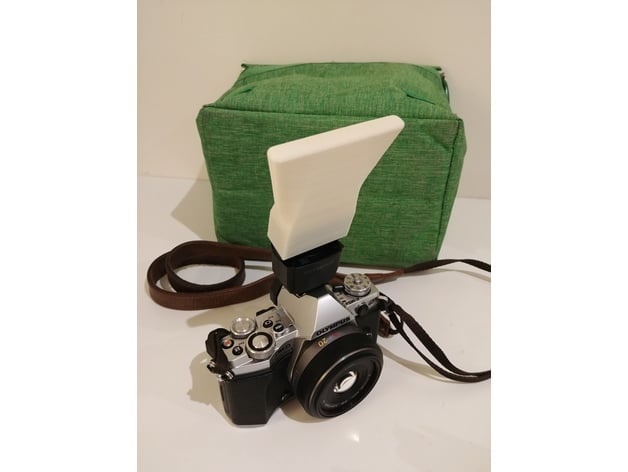 My wife is a quilter. She has a Long-Arm Quilting Machine for stitching together the top, batting, and back of quilts up to 10 feet wide.
My wife is a quilter. She has a Long-Arm Quilting Machine for stitching together the top, batting, and back of quilts up to 10 feet wide.It can be run manually, but it also has a computer drive mechanism so it can do preprogrammed patterns, doing a strip about 1 foot wide at a time. It's possible for the thread tension to be incorrect or go out of whack, causing the stitches to be uneven or "looped", mainly on the bottom side where it can't be seen easily. In that case one needs to stop it promptly and rip out the ugly stuff.
Since I had previously set up a Wyze camera to monitor my 3D printer from afar, we came up with the idea of having a camera show the bottom view of the quilter, to keep an eye on the stitching quality. But since the quilts can be up to 10 feet wide, a single camera won't show the whole area. So I'm working on a bracket to mount the camera to the bottom of the mechanism, so it will follow along and show the area just stitched.
 The bracket needs to fasten onto the mechanism tightly because it's going to be moving around quickly. But it needs to be removable too. Fortunately there are a couple of holes conveniently placed on the bobbin arm.
The bracket needs to fasten onto the mechanism tightly because it's going to be moving around quickly. But it needs to be removable too. Fortunately there are a couple of holes conveniently placed on the bobbin arm. I designed this angled plug on the end of some slightly flexible arms, to make what I call a "clip" that snaps onto the bobbin arm.
I designed this angled plug on the end of some slightly flexible arms, to make what I call a "clip" that snaps onto the bobbin arm.It took quite a few iterations to get the clip dimensions and stiffness correct. Fortunately I was able to print "slices" instead of printing the whole part.
 Here's how it looks installed.
Here's how it looks installed.The bracket needs to be stiff in the X and Y dimensions, because the quilter head will be moving around quickly. But it does not move up and down, so stiffness in the Z dimension is not so important. In an earlier iteration I had the bracket extend beyond the clip to have some leverage to keep it from wobbling up and down, but that proved not to be necessary.
 It's a large object with parts that go up and down from the central bracket plane, which would be hard to 3D print in one piece and would take a lot of support material. So I print it in two parts and plan to glue them together. At the moment they are held together with double-sided tape.
It's a large object with parts that go up and down from the central bracket plane, which would be hard to 3D print in one piece and would take a lot of support material. So I print it in two parts and plan to glue them together. At the moment they are held together with double-sided tape.This went through about 3 or 4 iterations before I figured out a simplified design which needs almost no support material. Each part can be iterated separately.
 There are some constraints on the location of the camera. It needs to clear the carriage mechanism in the Y dimension at one extreme, so the bracket can't be too short...
There are some constraints on the location of the camera. It needs to clear the carriage mechanism in the Y dimension at one extreme, so the bracket can't be too short...
... and needs to clear a roller in the Y and Z dimensions at the other. Since it's so long, it has to slope down.
 It needs to place the camera down a bit below the fabric so the camera can focus on it, and a bit to the left to look at the just-stitched area.
It needs to place the camera down a bit below the fabric so the camera can focus on it, and a bit to the left to look at the just-stitched area.The Wyze camera comes with a tilt-swivel mechanism, so I just need to get the camera close to the correct location and angle, and then I can fine-tune it. I think I'll have to fix the tilt-swivel mechanism in place with some removable glue... it's not very stiff.

The camera needs power, and conveniently there is a USB port at the back of the carriage. The power cord is masking-taped in place for now, and when this is all finalized I'll fasten them in place with sticky cable clips.
Next step is to try it in action and see if there are any problems with vibration etc.












